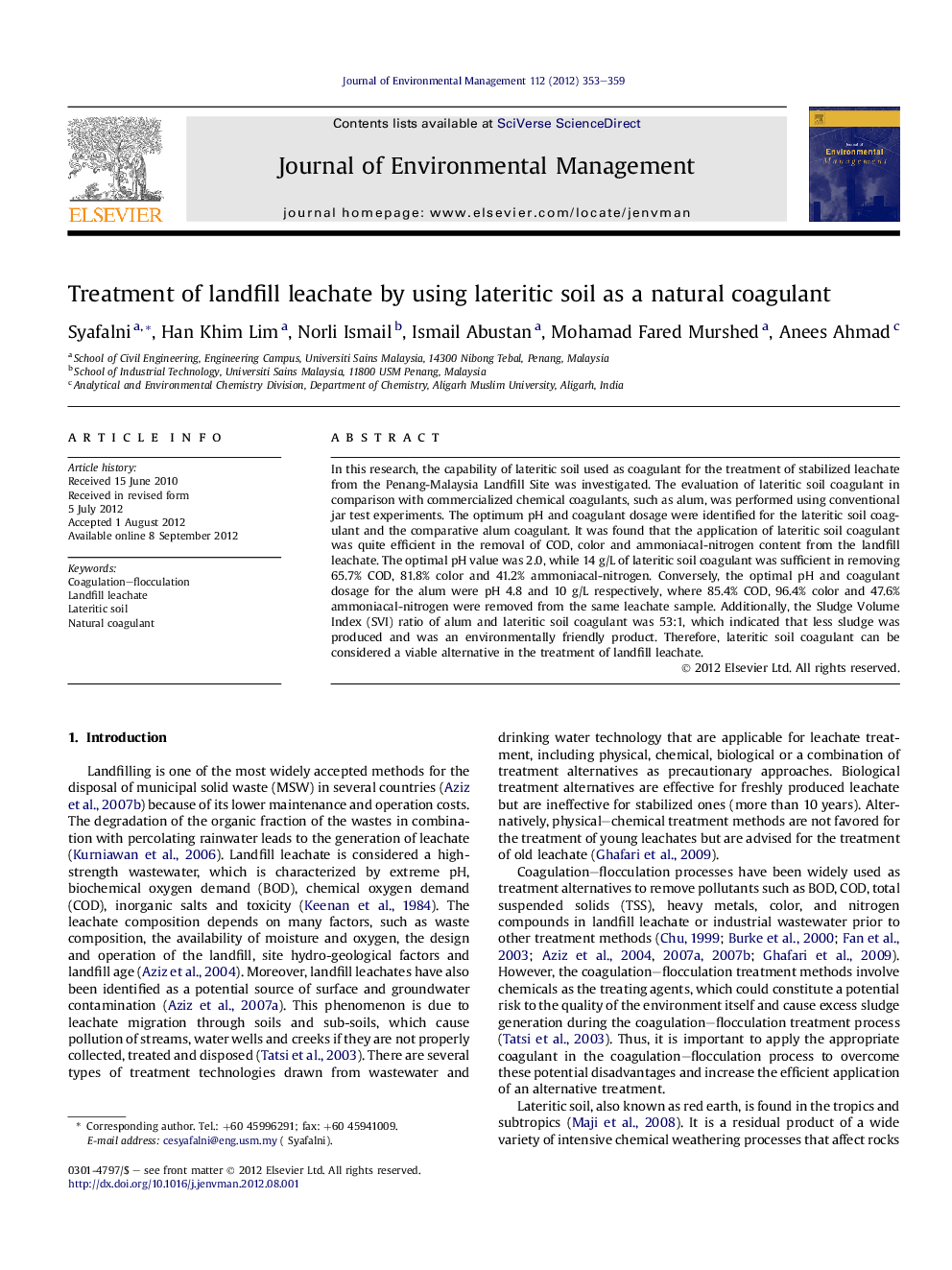| Article ID | Journal | Published Year | Pages | File Type |
|---|---|---|---|---|
| 1056439 | Journal of Environmental Management | 2012 | 7 Pages |
In this research, the capability of lateritic soil used as coagulant for the treatment of stabilized leachate from the Penang-Malaysia Landfill Site was investigated. The evaluation of lateritic soil coagulant in comparison with commercialized chemical coagulants, such as alum, was performed using conventional jar test experiments. The optimum pH and coagulant dosage were identified for the lateritic soil coagulant and the comparative alum coagulant. It was found that the application of lateritic soil coagulant was quite efficient in the removal of COD, color and ammoniacal-nitrogen content from the landfill leachate. The optimal pH value was 2.0, while 14 g/L of lateritic soil coagulant was sufficient in removing 65.7% COD, 81.8% color and 41.2% ammoniacal-nitrogen. Conversely, the optimal pH and coagulant dosage for the alum were pH 4.8 and 10 g/L respectively, where 85.4% COD, 96.4% color and 47.6% ammoniacal-nitrogen were removed from the same leachate sample. Additionally, the Sludge Volume Index (SVI) ratio of alum and lateritic soil coagulant was 53:1, which indicated that less sludge was produced and was an environmentally friendly product. Therefore, lateritic soil coagulant can be considered a viable alternative in the treatment of landfill leachate.
► The capability of lateritic soil use as a coagulant for landfill leachate is proposed. ► The performance for removal COD, color and ammoniacal-nitrogen content were efficient. ► The SVI ratio of Alum and lateritic soil coagulant was 53:1. ► Lateritic soil as a coagulant indicates less sludge and environmentally friendly product.
